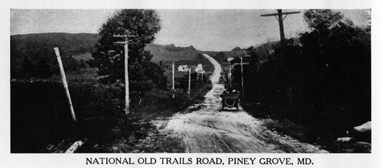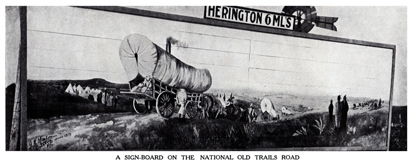 WHAT nearer the heart of the pioneer than an “Old Trail”? Of ever-recurring interest to friends; every turn full of memories, often with the unexpected in store. It was so with Braddock in 1755. His road—or, rather, trail—had its extension in the Cumberland Road or Old Pike, authorized by the United States Government in 1806. This national road was surveyed to St. Louis, graded to Vandalia, Ill., but not built by the National Government beyond Indianapolis, Indiana. The “Old Trail” grew westward under the name of “Boone's Lick Road,” to Old Franklin—afterward Booneville—in Howard County, Missouri. From there it extended as the “Santa Fe Trail” to that town—then in Mexico. Coronado, in 1541, had passed over a part of this route, coming through from the Pacific Coast. Baptiste Lalande—a French Creole, and maybe the first “salesman” to trade by sample—traveled this route in 1804. In its later history a cut-off left Fort Atkinson, Kan., and, passing southward through the Indian Territory, returned to the earlier line at Las Vegas, New Mexico. Kit Carson, then a boy of sixteen, ran away over the trail in 1826. From Santa Fe the trail pushed south to El Paso, Tex., and from there west, through what is now Arizona, via Douglass [Douglas], Phoenix and Yuma to San Diego and Los Angeles in California. General Kearney gave his name to a part of this route.
WHAT nearer the heart of the pioneer than an “Old Trail”? Of ever-recurring interest to friends; every turn full of memories, often with the unexpected in store. It was so with Braddock in 1755. His road—or, rather, trail—had its extension in the Cumberland Road or Old Pike, authorized by the United States Government in 1806. This national road was surveyed to St. Louis, graded to Vandalia, Ill., but not built by the National Government beyond Indianapolis, Indiana. The “Old Trail” grew westward under the name of “Boone's Lick Road,” to Old Franklin—afterward Booneville—in Howard County, Missouri. From there it extended as the “Santa Fe Trail” to that town—then in Mexico. Coronado, in 1541, had passed over a part of this route, coming through from the Pacific Coast. Baptiste Lalande—a French Creole, and maybe the first “salesman” to trade by sample—traveled this route in 1804. In its later history a cut-off left Fort Atkinson, Kan., and, passing southward through the Indian Territory, returned to the earlier line at Las Vegas, New Mexico. Kit Carson, then a boy of sixteen, ran away over the trail in 1826. From Santa Fe the trail pushed south to El Paso, Tex., and from there west, through what is now Arizona, via Douglass [Douglas], Phoenix and Yuma to San Diego and Los Angeles in California. General Kearney gave his name to a part of this route.
As offshoots and outgrowths of these “Old Trails” there grew others of like importance. Doniphan's Road and “El Camino Real,” the King's Highway, formed parts of the Santa Fé Trail and its extension. The “Overland Trail” leaving Atchison, Kan., passed through Nebraska into Colorado, via Julesburg. A branch ran south to Denver. There were also two alternate lines—the “Leavenworth and Pike's Peak Express,” through northern Kansas to Denver, and the “Butterfield Overland Despatch” route through central Kansas and likewise to Denver.  The “Overland Trail” passed through the Rocky Mountains at Bridger's Pass, Wyoming, and on to Salt Lake. Running south of the lake, it passed through the central part of Nevada to Carson City, and thence, via Placeville [Placerville] and Sacramento, in California, to San Francisco. General John C. Fremont (of whom the writer's grandfather was an aide-de-camp) passed over this trail in 1840. Zebulon M. Pike had preceded him in 1806 to “Pike's Peak or Bust.” The “Oregon Trail” followed—or rather preceded—the “Overland Trail” along part of the same route. Crossing the continental divide, it went through South Pass, Wyoming, and up through Idaho and Oregon on to Astoria, at the mouth of the Columbia River, in what was to be the State of Washington.
The “Overland Trail” passed through the Rocky Mountains at Bridger's Pass, Wyoming, and on to Salt Lake. Running south of the lake, it passed through the central part of Nevada to Carson City, and thence, via Placeville [Placerville] and Sacramento, in California, to San Francisco. General John C. Fremont (of whom the writer's grandfather was an aide-de-camp) passed over this trail in 1840. Zebulon M. Pike had preceded him in 1806 to “Pike's Peak or Bust.” The “Oregon Trail” followed—or rather preceded—the “Overland Trail” along part of the same route. Crossing the continental divide, it went through South Pass, Wyoming, and up through Idaho and Oregon on to Astoria, at the mouth of the Columbia River, in what was to be the State of Washington. 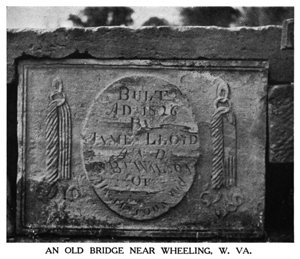 Astor's men blazed the way in 1810-11. The California cut-off left Fort Hall, Idaho, and, passing through Nevada, reached San Francisco, via the “Overland Trail.” The “Mormon Trail” of 1847—with Brigham Young and Smith—followed the “Overland” in central Nebraska and in Wyoming and Utah, but passed considerably to the north thereof from Cottonwood Springs, Nebraska, to Elk Mountain, Wyoming. Fort Independence, Missouri, was the point of departure for most Western travel in the early days of the Pony Express and Mail Coach service passing over all these trails.
Astor's men blazed the way in 1810-11. The California cut-off left Fort Hall, Idaho, and, passing through Nevada, reached San Francisco, via the “Overland Trail.” The “Mormon Trail” of 1847—with Brigham Young and Smith—followed the “Overland” in central Nebraska and in Wyoming and Utah, but passed considerably to the north thereof from Cottonwood Springs, Nebraska, to Elk Mountain, Wyoming. Fort Independence, Missouri, was the point of departure for most Western travel in the early days of the Pony Express and Mail Coach service passing over all these trails.
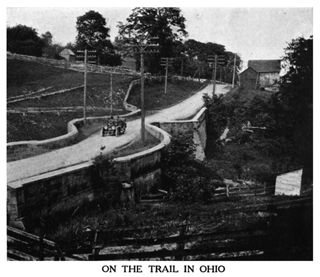
![]() A century in our national life has slipped away since these hardy pioneers first conceived of a trans-continental highway; a conception “to bind the States together in a common brotherhood, and thus perpetuate and preserve the Union.” Had Calhoun's prophetic words been heeded, and in the full knowledge thereof had we, as a nation, built roads, might not the great struggle between North and South have been avoided? There are some who believe a perpetuation of this indifference to the building of national roads may result in another such attempt at separation, but with a far different alignment. In their inception, Braddock's Road, the eastern beginning, and Kearney's, the western terminus, of the “Old Trails,” were the scenes of bloody struggles.
A century in our national life has slipped away since these hardy pioneers first conceived of a trans-continental highway; a conception “to bind the States together in a common brotherhood, and thus perpetuate and preserve the Union.” Had Calhoun's prophetic words been heeded, and in the full knowledge thereof had we, as a nation, built roads, might not the great struggle between North and South have been avoided? There are some who believe a perpetuation of this indifference to the building of national roads may result in another such attempt at separation, but with a far different alignment. In their inception, Braddock's Road, the eastern beginning, and Kearney's, the western terminus, of the “Old Trails,” were the scenes of bloody struggles.
May our beloved land be gridironed by National Highways, among them the National Old Trails Road, in time to prevent a recurrence of such scenes of strife! And now, one hundred years or more after the birth of our first National Highway, since when our government has been idle in that regard, our people are demanding of Congress the construction not only of the National Old Trails Road, 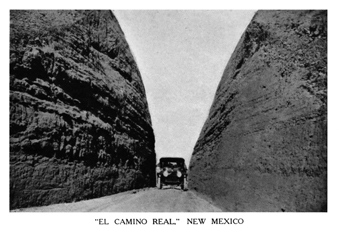 but likewise “National Highways in the length and breadth of these United States of America, which will secure the benefits—social, moral, commercial, industrial, material, educational and personal—in the progress and uplift of the American people which follow in the train of easy and free intercommunication and transit between the great centers of population and distribution, and the great productive areas of the nation,” and which will “bind the States together in a common brotherhood, and thus perpetuate and preserve the Union.” The great nations of Europe, England, France, Germany, Italy, and, in fact, the lesser states of Switzerland, Greece and Spain, have great highways—many of them national roads built and maintained by the central government.
but likewise “National Highways in the length and breadth of these United States of America, which will secure the benefits—social, moral, commercial, industrial, material, educational and personal—in the progress and uplift of the American people which follow in the train of easy and free intercommunication and transit between the great centers of population and distribution, and the great productive areas of the nation,” and which will “bind the States together in a common brotherhood, and thus perpetuate and preserve the Union.” The great nations of Europe, England, France, Germany, Italy, and, in fact, the lesser states of Switzerland, Greece and Spain, have great highways—many of them national roads built and maintained by the central government. 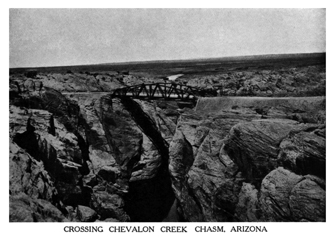 In the United States no such roads exist. Our national life began with the modern industrial growth of the world. Steam and electricity had been harnessed for the needs of man. Steamboats, railroads, telegraph, telephones, and electric trolley lines grew so rapidly that we failed to see or feel the need of roads. The older nations existed before these modern inventions. Their peoples had to move about. Roads filled the needs of their existence and had come into being before industrialism revolutionized modern life. Furthermore, Europe had no river system such as traverses our great country. During all ages it has been of primary importance to provide a people with means of intercommunication. People, like water, must move or stagnate. They must run and play like the brook itself or become sluggish and dull—to themselves as well as to others. Of the seven modes of intercommunication—water, roads, postal, railroad, telegraph, telephone and wireless—only one, roads, is free to all the people of the earth. Roads are the most universally used and are therefore the most beneficial to the greatest number of people.
In the United States no such roads exist. Our national life began with the modern industrial growth of the world. Steam and electricity had been harnessed for the needs of man. Steamboats, railroads, telegraph, telephones, and electric trolley lines grew so rapidly that we failed to see or feel the need of roads. The older nations existed before these modern inventions. Their peoples had to move about. Roads filled the needs of their existence and had come into being before industrialism revolutionized modern life. Furthermore, Europe had no river system such as traverses our great country. During all ages it has been of primary importance to provide a people with means of intercommunication. People, like water, must move or stagnate. They must run and play like the brook itself or become sluggish and dull—to themselves as well as to others. Of the seven modes of intercommunication—water, roads, postal, railroad, telegraph, telephone and wireless—only one, roads, is free to all the people of the earth. Roads are the most universally used and are therefore the most beneficial to the greatest number of people.
![]() But to go back more specifically to the National Old Trails Road itself. During 1915 our people will, more than ever before, determine upon seeing America. This, because of our two expositions at San Diego and San Francisco coming during the height of the European struggle. See America first? Yes, most decidedly yes! But what part of America shall do the seeing—the East or the West, the North or the South propose to see the West! And this is as it should be, for “See America First” usually is intended to mean go west instead of to Europe. But should it mean that only, and why does it now only mean that? Obviously the latter, because concentration of wealth goes with the density of population, and this means a larger leisure class having time and money enough with which to travel for pleasure. The northeastern section, with one-fourth the population on about one-fourteenth of our area, has more of this kind of population to draw from than have other sections. Why has this class gone to Europe instead of west? Has it been entirely because of the greater historic interest of old countries? The greater beauty and permanency? The variety of speech, manners and customs? Or has the root of it been the greater facilities for comfort in traveling? Or a combination of all these elements? Wellington, the great authority on railroad location and operation, gave most conclusive data to show the enormously favorable effect of convenience and comfort on passenger travel. The advent of electric street railways with the “leave at your door” service produced a passenger movement unattainable by the less convenient service of steam railroads. Fine stations, first-class rolling stock, substantial road-bed, cleanliness, rapid, regular and frequent service are all most important contributing causes inducing travel and its repetition where it would not otherwise exist. The railroads of England and Continental Europe have established their own hotels to add to their railroad revenue. Amusement resorts have been created for the same purpose. The bulk of tourist traffic is created, not by the merit of what is to be seen so much as by the skill and extent of its advertisement, and the comfort and convenience.
But to go back more specifically to the National Old Trails Road itself. During 1915 our people will, more than ever before, determine upon seeing America. This, because of our two expositions at San Diego and San Francisco coming during the height of the European struggle. See America first? Yes, most decidedly yes! But what part of America shall do the seeing—the East or the West, the North or the South propose to see the West! And this is as it should be, for “See America First” usually is intended to mean go west instead of to Europe. But should it mean that only, and why does it now only mean that? Obviously the latter, because concentration of wealth goes with the density of population, and this means a larger leisure class having time and money enough with which to travel for pleasure. The northeastern section, with one-fourth the population on about one-fourteenth of our area, has more of this kind of population to draw from than have other sections. Why has this class gone to Europe instead of west? Has it been entirely because of the greater historic interest of old countries? The greater beauty and permanency? The variety of speech, manners and customs? Or has the root of it been the greater facilities for comfort in traveling? Or a combination of all these elements? Wellington, the great authority on railroad location and operation, gave most conclusive data to show the enormously favorable effect of convenience and comfort on passenger travel. The advent of electric street railways with the “leave at your door” service produced a passenger movement unattainable by the less convenient service of steam railroads. Fine stations, first-class rolling stock, substantial road-bed, cleanliness, rapid, regular and frequent service are all most important contributing causes inducing travel and its repetition where it would not otherwise exist. The railroads of England and Continental Europe have established their own hotels to add to their railroad revenue. Amusement resorts have been created for the same purpose. The bulk of tourist traffic is created, not by the merit of what is to be seen so much as by the skill and extent of its advertisement, and the comfort and convenience.
![]() The cost of the trip is likewise an important consideration. Motoring through Europe is far less expensive per locality seen and miles covered than many people spend traveling via rail. Not that motoring is the least costly, by any means. Lakewood, N. J., is no better than Lakehurst, a few miles away, except for convenience and comforts. Colorado Springs is no more delightful or advantageous than Manitou Junction could have been were the comforts and conveniences there. This is also shown by the fact, of which most of us know specific examples, that railroads have discriminated in favor of certain centers at the expense of other localities. How was this done? Better rates, more frequent and rapid service for freight and passengers, and greater convenience and comfort for the latter. The same relative difference that exists between our eastern shores and Europe exists in comparing our West with our East. Furthermore, we in the East came from Europe. The latter is our old home of years ago, before many of us were born. For the West to go East is likewise going to the old hold of ancestry. It is easier to travel east than to travel west—that is, for pleasure or association, and sometimes for business—more people go east than the reverse if one does not count them returning westward! Why is it easier? Essentially increased comfort and convenience and that which goes with it—reduced cost.
The cost of the trip is likewise an important consideration. Motoring through Europe is far less expensive per locality seen and miles covered than many people spend traveling via rail. Not that motoring is the least costly, by any means. Lakewood, N. J., is no better than Lakehurst, a few miles away, except for convenience and comforts. Colorado Springs is no more delightful or advantageous than Manitou Junction could have been were the comforts and conveniences there. This is also shown by the fact, of which most of us know specific examples, that railroads have discriminated in favor of certain centers at the expense of other localities. How was this done? Better rates, more frequent and rapid service for freight and passengers, and greater convenience and comfort for the latter. The same relative difference that exists between our eastern shores and Europe exists in comparing our West with our East. Furthermore, we in the East came from Europe. The latter is our old home of years ago, before many of us were born. For the West to go East is likewise going to the old hold of ancestry. It is easier to travel east than to travel west—that is, for pleasure or association, and sometimes for business—more people go east than the reverse if one does not count them returning westward! Why is it easier? Essentially increased comfort and convenience and that which goes with it—reduced cost.
![]() On the other hand, there is no reason why “seeing America first” should only mean going West. The East should not be passive and indifferent about it. The East should cater to the traffic which it can induce from the West just as much as the West now tries to cater for eastern traffic. We have an Atlantic shore and summer climate that the West cannot elsewhere secure. We should copy Europe and get busy for the business the West is more than ready to give us. They would see and like Niagara, the Adirondacks, White Mountains, the lakes and woods of Maine, the shores of Cape Cod and Florida, if we bestirred ourselves and made them feel at home and that they were wanted. They do all this for us. So does Europe. Why do we not reciprocate? We are beginning to.
And so we say the West should in 1915 see the East and the North as it never has before. But again to come back to the National Old Trails Road! There was spent on its improvement last year more than $2,000,000. There is already contracted for improvements during 1915 more than as much more. It is expected that over $5,000,000 will be appropriated therefor before 1916! Burton in Motor Age for February 25, 1915, gives the road conditions as follows:
On the other hand, there is no reason why “seeing America first” should only mean going West. The East should not be passive and indifferent about it. The East should cater to the traffic which it can induce from the West just as much as the West now tries to cater for eastern traffic. We have an Atlantic shore and summer climate that the West cannot elsewhere secure. We should copy Europe and get busy for the business the West is more than ready to give us. They would see and like Niagara, the Adirondacks, White Mountains, the lakes and woods of Maine, the shores of Cape Cod and Florida, if we bestirred ourselves and made them feel at home and that they were wanted. They do all this for us. So does Europe. Why do we not reciprocate? We are beginning to.
And so we say the West should in 1915 see the East and the North as it never has before. But again to come back to the National Old Trails Road! There was spent on its improvement last year more than $2,000,000. There is already contracted for improvements during 1915 more than as much more. It is expected that over $5,000,000 will be appropriated therefor before 1916! Burton in Motor Age for February 25, 1915, gives the road conditions as follows:
![]() “Washington to Frederick, 55 miles, about equal parts of macadam and dirt; Frederick to Cumberland, 135 miles, gravel and improved road in about equal proportions; Cumberland to Wheeling, 133 miles, improved road with some gravel; Wheeling to Columbus, 128 miles, brick road almost all the way; Columbus to Indianapolis, 171 miles, permanently improved road with about 40 miles of gravel; Indianapolis to Terra Haute, 70 miles, gravel; Terra Haute to St. Louis, 173 miles, dirt; St. Louis to Kansas City, 313 miles, dirt with some stretches of improved road; Kansas City to Dodge City, 371 miles, dirt; Dodge City to La Junta, 215 miles, dirt with about 75 miles of sandy going; La Junta to Flagstaff, 811 miles, natural dirt with the exception of about 100 miles through the mountains; Flagstaff to Kingman, 173 miles, natural dirt; Kingman to Victorville, 275 miles, sand; Victorville to Los Angeles, 104 miles, 40 miles of hard mountain road to San Bernardino, and from there on macadam across Southern California.”
“Washington to Frederick, 55 miles, about equal parts of macadam and dirt; Frederick to Cumberland, 135 miles, gravel and improved road in about equal proportions; Cumberland to Wheeling, 133 miles, improved road with some gravel; Wheeling to Columbus, 128 miles, brick road almost all the way; Columbus to Indianapolis, 171 miles, permanently improved road with about 40 miles of gravel; Indianapolis to Terra Haute, 70 miles, gravel; Terra Haute to St. Louis, 173 miles, dirt; St. Louis to Kansas City, 313 miles, dirt with some stretches of improved road; Kansas City to Dodge City, 371 miles, dirt; Dodge City to La Junta, 215 miles, dirt with about 75 miles of sandy going; La Junta to Flagstaff, 811 miles, natural dirt with the exception of about 100 miles through the mountains; Flagstaff to Kingman, 173 miles, natural dirt; Kingman to Victorville, 275 miles, sand; Victorville to Los Angeles, 104 miles, 40 miles of hard mountain road to San Bernardino, and from there on macadam across Southern California.”



